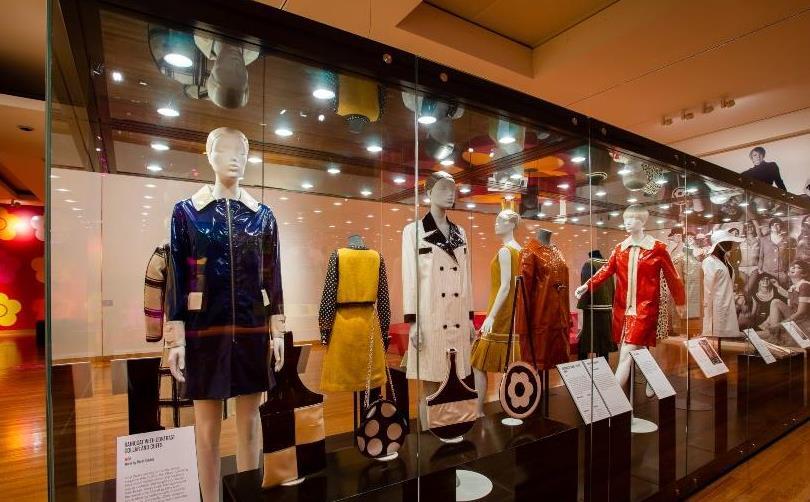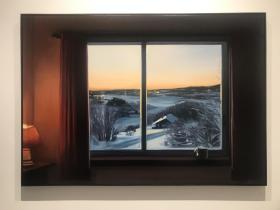Mary Quant is the infamous founder of 1960 London’s ‘Chelsea Look’ – hot pants, mini skirts and super-high hemlines. Even more significantly, she was a pioneer of global retail distribution and mass marketing, propelled by the appeal of her irreverent character – an early ‘influencer’. Bendigo Art Gallery’s current exhibition Mary Quant: Fashion Revolutionary showcases the fashion giant’s impressive body of work, personality and legacy.
As Victoria, and the world, emerge into a ‘new normal’, there is an intriguing timeliness to studying a fashion revolution born in a post-war era. In response to a period of austerity, combined with women’s new found working lives and liberation, Quant’s designs are explosive in colour, innovation and design.
Beginning with a glimpse of 14-year old Quant’s sketch book, the exhibition is thoughtfully curated as it walks the viewer through the evolution of both an era and a career. Starting on High Street, London in Mary Quant’s first physical store BAZAAR, moving through the beginning of the exhibition feels like entering a 1960s department store, similar to those evoked in Mad Men. Quant’s dynamic window displays are carefully recreated: a mannequin dressed in ruffled Victorian bathing shorts walks a lobster on a leash. A suit is tailored from Victorian-printed curtains.
Dispersed throughout the exhibition are short, black and white films that show that behind the brilliant designer was an astute business woman, a visionary in all senses. The exhibition builds from gallery-white walls to shifting coloured perspex to a bold runway layout, emanating Quant’s signature fashion shows held in townhouses in London – electric and fast-paced, overstimulating displays of music, colour and movement.
The latter part of the exhibition has the sacred feeling of walking through a personal or private collection. In 2018, the Victoria and Albert Museum launched the #WeWantQuant campaign, a call out for garments and personal stories from the real people who wore her clothes. These particular pieces are accompanied by black and white photographs of the owners of the pieces on loan. This is one of the most compelling parts of the exhibition, documenting what these garments really meant to the working people who bought them. A woman in the sixties wasn’t allowed to hold a bank account without a male relative’s written permission; purchasing her own clothing was an act of defiance. These pieces have clearly been treasured, some worn by multiple generations of women, across different cities and creative careers.
Unfortunately, the exhibition does little to critically engage with the privilege and class issues of some of Quant’s designs, and the problematic legacy that is born from revolutionising mass production of clothing. Quant re-appropriates working- class uniforms, such as a butcher’s apron described as ‘humorous’, and the use of materials like sail cloth and hessian, only to sell them at exorbitant prices. The fashion industry is responsible for 10% of all global carbon emissions, with this amount expected to grow.
It does, however, provoke questions about this moment in our own time, and how we, the audience, might make good of this shift to trans-seasonal, or seasonless, clothing, and interrogate the systems that perpetuate fast fashion and climate destruction.
Quant is quoted in the exhibition as saying, ‘Fashion is a tool to compete in life outside the home’. While the exhibition raises troubling questions about the legacy of mass production, after a year of cancelled seasons and comfortable leggings, it does feel pretty damn good to celebrate clothes. 4 stars: ★★★★ Mary Quant: Fashion Revolutionary Bendigo Art Gallery Tickets: $12- $25 20 March – 11 July, 2021




